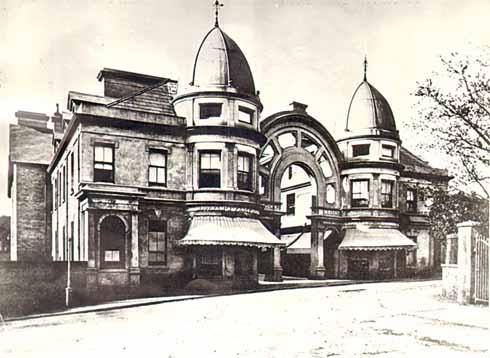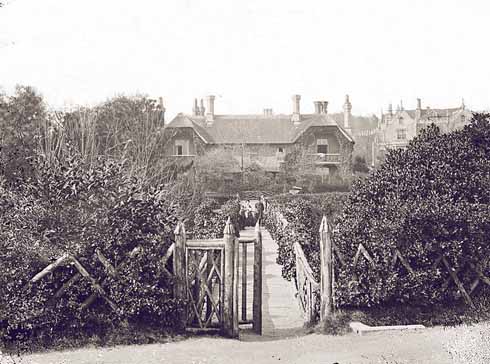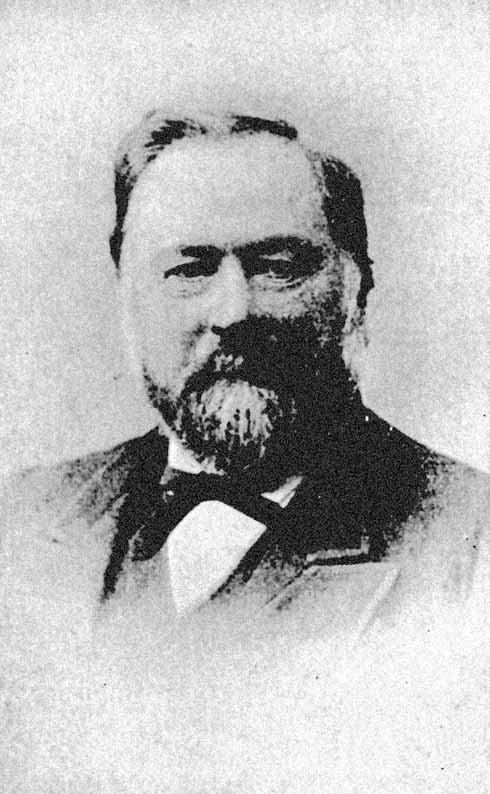Joy’s folly
The story behind the building of Bournemouth arcade. By Peter Blake.
Published in April ’15
‘A heavy brick built Arcade of shops, which have been built over, thereby spoiling, what had hitherto been one of the most picturesque spots in Bournemouth’. Thus wrote Philip Brannon in his 1869 Guide to Bournemouth, leaving his readers in no doubt that he did not approve of Henry Joy’s new Bournemouth Arcade, originally known as Gervis Arcade, which had begun in 1866. Brannon clearly felt very strongly about this matter, as he had previously carried advertisements for Joy’s building company in his Guides, and I’m sure that Joy would have taken his business elsewhere following Brannon’s statement. Soon dubbed Joy’s Folly by sceptical townsfolk, the Arcade as we know it today only really emerged in 1873, when the glazed roof was put in place. From this time, the value of the Arcade as an all weather shopping centre really became evident, and the Arcade also became the place to be seen, being described in Bright’s Guide to Bournemouth as being one of ‘ the greatest attractions of the town’, and a ‘favourite promenade’ where could be seen a ‘motley concourse of fashion and beauty.’ Indeed, the author went further, stating that the Arcade reminded him of Bath in all its splendour. Of course, Frederick Bright had a vested interest in promoting the Arcade in a favourable light, given that his store had a considerable presence there.
What had angered Brannon and the other opponents of Joy’s scheme was the sweeping away of a pretty glen, crossed by a rustic bridge, which was covered with ivy and other climbing plants, including wild roses in the summer. Another commentator, W J Day, described the glen, known as Church Glen following the building of St Peters Church in 1851, as ‘a deep dell of exceptional charm’. The bridge, which occupied the same position as the Arcade, was built of rough fir poles, and spanned the glen, at the bottom of which ran a small brook which ran into the Bourne. This bridge was built by Thomas Shettle in 1853 for the benefit of his tenants in Old Christchurch Road, but it was also used by the general public for a toll of one halfpenny. It was not only a picturesque short cut to the cliffs and pier, but also a popular meeting place. This was the site Henry Joy chose for his ambitious, if speculative, Arcade, and despite the opposition, and the difficulties with the site, given the depth and problems with laying adequate foundations, he lived to see the Arcade become one of the Town’s most valuable assets, even though it threatened to ruin him at first. The Arcade was commenced in 1866, and took seven years to complete, with the glazed roof the finishing touch.
The building work did not go smoothly, as at one stage the walls collapsed, ‘like a pack of cards’ according to Day, no doubt convincing the inhabitants that the project was foolhardy from the outset. It is interesting to see that the Arcade was so little regarded in the early days that one of the inner shops and residence could be had for £40 per annum on a 21 year lease, and one of the larger outer shops for £60 per annum, and many of the units remained empty for a considerable time. By 1871, the Arcade housed a Post Office, Milliner, stationer, Cigar merchant (Edward Offer, whose brass shop plate and tiled sign can still be seen), tailor, upholsterer, umbrella maker, confectioner, an Algerian goods dealer and jeweller amongst others. Many of the businesses struggled to make a living in the early days, and very few lasted the whole term of their leases. As the years went on, the Arcade became a prestigious place to have an establishment, catering for the well to do folk of Bournemouth. Certainly in 1911 all the units were occupied, with Bright’s occupying six units, and Charles Fox, jeweller, also there, established in 1876 and still going strong today.
Henry Joy was born in Chalbury, Dorset, around 1822. In the 1841 census, his occupation is given as carpenter, as were his father and grandfather. In 1842, he married Elizabeth Hebditch, and was living with her and their four children in Chalbury in 1851, still earning his living as a carpenter. By 1861, they had moved to the Holdenhurst area of Bournemouth, by now with their seven children. It was at this time that his enterprising spirit came to the fore, and a series of ambitious projects were carried out by him contributing to the development of Bournemouth as we know it today. Not all his building projects proceeded smoothly, as in 1857 the Bournemouth Inspector of Nuisances reported him for a defective privy. These projects included Southbourne Terrace, overlooking the Square, in the mid 1860s, the Assembly Rooms in Seamoor Road, now Our Lady Immaculate Catholic Church, built in 1886, The Quadrant, and Westbourne Arcade in 1885. By 1871 he was describing himself as a builder, and living at South Bank, Southbourne Terrace, which he had been responsible for building. In 1881, by now a builder and farmer, so he had acquired some land as well, the family were living in Westover Villas, Westover Road, a very respectable address, with solicitors, ministers and surgeons as neighbours.For many years, Joy sat on the Christchurch Board of Guardians, the authority that administered the Poor Law, and he was one of the surviving members of the old Bournemouth Commissioners, the town’s first governing body, indicating a desire to play a wider role in society as well. Sadly, Elizabeth died in 1882, and Joy remarried, to Mary Teresa Crosby, later that year. By 1901 they had moved to Seamoor House, Poole Road, Westbourne, which he subsequently had razed to the ground, and erected twelve houses on the site, now known as Eldon Place. By 1901, the family were living in Duncairn, Manor Road, Eastcliff. Joy died in April 1906, and is buried in Wimborne Rd cemetery, alongside Elizabeth. In his will, Joy left in excess of £47,000, a considerable sum in those days. His widow, Mary, died in 1924, having lived out her last days in comfort in a fourteen-room villa in Preston, Sussex.
Joy’s obituary refers to his ‘indefatigable energy, indomitable will, and that valuable gift the power of foresight’. Day, who knew Joy for about forty years, remembers him as having a kindly smile, being free of ostentation, and living quietly, despite being able to live in the most fashionable parts of town. Day also relates a story from Joy’s early life as a journeyman carpenter, walking the roads seeking work with his tools over his shoulder. He managed to get some work on a building then under construction, which later became the Woodman Tavern in Branksome. From these humble beginnings, and with practically no capital behind him, Joy was able to carry out his speculative building projects and to prosper. Day, no apologist for Joy, is in no doubt as to Joy’s importance in the development of Bournemouth. In his words, ‘his work remains if not noble in appearance, a monument to a bold and determined pioneer in the making of Bournemouth.’

Some of the furnishing work was opulent. This elaborate stained-glass window survives to this day at Essential Jewellery at number 17
History has been kinder to Joy’s Folly than his contemporaries were. Being unaware of the charming glen and bridge which existed before the Arcade was built, and of the outcry against the despoiling of the site, a charge which shows there is nothing new when new developments are proposed, we see rather a structure which speaks of an earlier, more elegant age, where drapers and umbrella makers could make a living, and fashionable townspeople went to see and be seen. The importance of the Arcade was recognised in 1974 when it was listed as a Grade II building of Special Architectural or Historic Interest, and Henry Joy’s part in its creation was honoured by the placing of a plaque on the inside entrance to the Arcade on Old Christchurch Road in 1986. There can be no doubt that Henry Joy was a man of vision and conviction, who played a major part in the development of Bournemouth despite considerable opposition and uncertainty about the success of his projects. I am sure that in later life he was able to look at the buildings he developed in Bournemouth with a great deal of satisfaction and pride. ◗

The inside of the light and airy arcade was and is an excellent place to shop when the streets outside are teeming with rain







